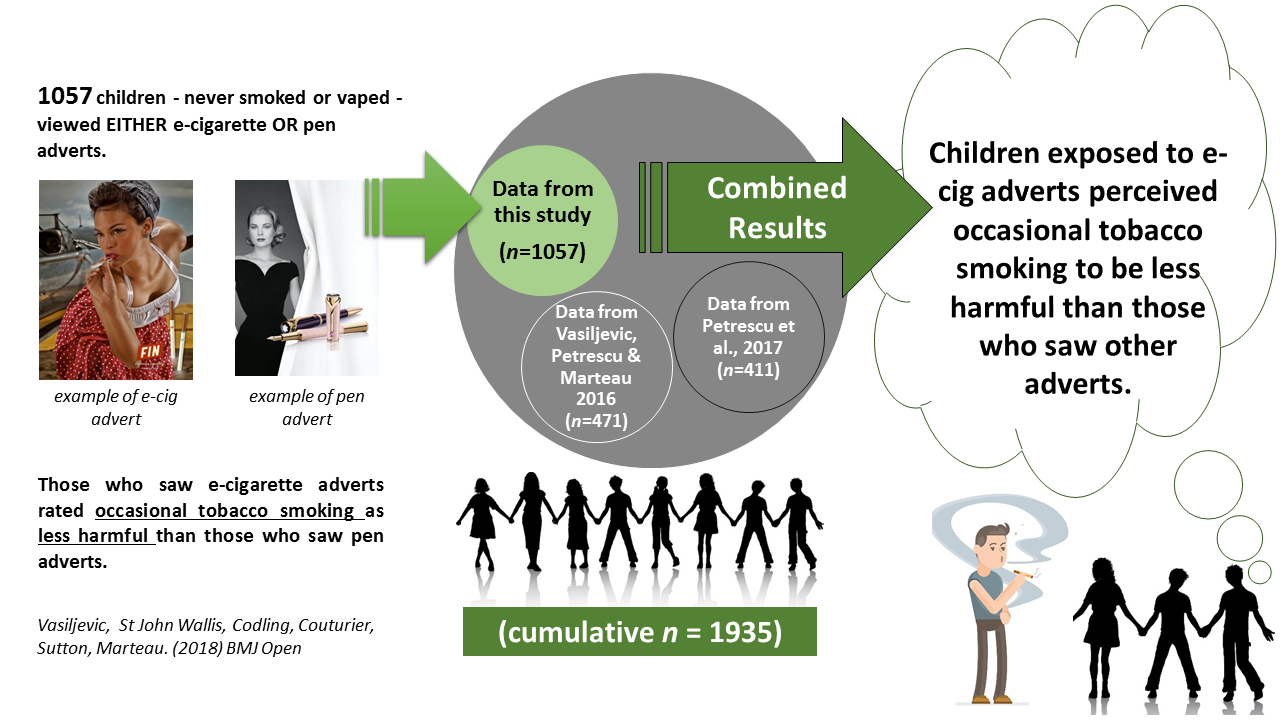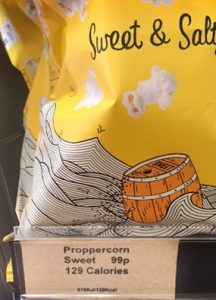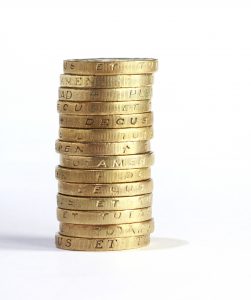In two previous studies, we found that children exposed to e-cigarette adverts perceived occasional tobacco smoking as less harmful than children not exposed to such adverts. In this paper, we replicate and extend these findings using a larger sample, a stronger control condition and an updated meta-analysis.

This study adds to existing evidence that exposing children to adverts for e-cigarettes may reduce how harmful they perceive tobacco smoking to be. Further studies are warranted, using longitudinal and experimental designs, to assess a wider range of possible impacts of the marketing of e-cigarettes including attitudes towards the tobacco industry and tobacco control policies.
E-cigarette Adverts and Children’s Perceptions of Tobacco Smoking Harms: An Experimental Study. Vasiljevic, St John Wallis, Codling, Couturier, Sutton, Marteau, BMJ Open. Access full text.



 The UK Government levy on sugary drinks producers started in April 2018. This will potentially influence the cost of a large range of non-alcoholic beverages. Our new study (published 26th April 2018) looks at how increasing the price of snack foods might compare in impact. We found that a 10% increase in the price of sweet snacks could lead to a similar reduction in consumer demand as the same price increase for sugar-sweetened drinks. However, such a price increase is estimated to have knock-on effects that may further reduce purchases of sugar-sweetened drinks and other snacks. Furthermore, as sweet snacks provide twice as much sugar in the diet as sugar-sweetened drinks, the overall reduction on sugar intake could be even greater than that observed with price increases for sugar-sweetened drinks.
The UK Government levy on sugary drinks producers started in April 2018. This will potentially influence the cost of a large range of non-alcoholic beverages. Our new study (published 26th April 2018) looks at how increasing the price of snack foods might compare in impact. We found that a 10% increase in the price of sweet snacks could lead to a similar reduction in consumer demand as the same price increase for sugar-sweetened drinks. However, such a price increase is estimated to have knock-on effects that may further reduce purchases of sugar-sweetened drinks and other snacks. Furthermore, as sweet snacks provide twice as much sugar in the diet as sugar-sweetened drinks, the overall reduction on sugar intake could be even greater than that observed with price increases for sugar-sweetened drinks.